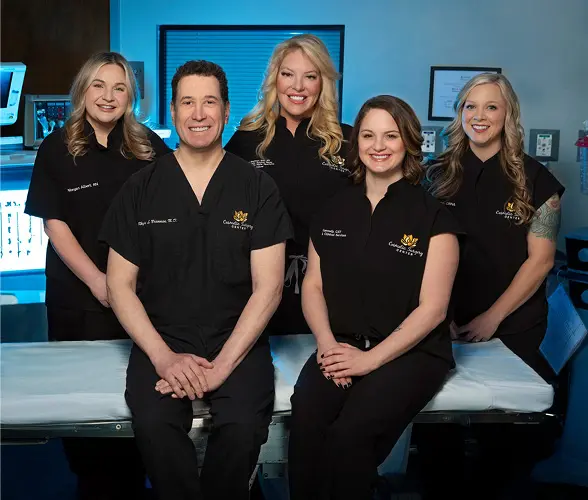High Brow, Low Brow
November 7, 2023 - Rhys Branman, MDHere’s an interesting statement I just read: “Researchers have suggested that working women are subconsciously sculpting their eyebrows into the more masculine shape.”
In this case that means there is a trend toward lower eyebrows. The article made me wonder more about this history of eyebrow styles. I started thinking about ancient Egyptian art and how the eye was depicted, very dramatic! Considering 80% of human communication is nonverbal, and that the eyes convey much of this emotion, it’s not surprising that eyebrows have a place in history. So I did a little research on the history of eyebrows in cosmetic surgery.
- The ancient Indian goddess Lakshmi is often depicted and described as having lovely crescent-shaped eyebrows. As a goddess of beauty and wealth, this is not surprising. Most people probably don’t know that much of plastic surgery began India where the first recorded rhinoplasty was performed. Sanskrit texts record that the Hindu surgeon Sushruta performed this procedure using skin from the cheeks to recreate a nose around 600 B.C.
- From the Middle Eastern Arab countries all the way to India, a process called ‘threading’ was used to remove unwanted hair, including eyebrows. In ancient Egypt, this was called ‘Fatlah’ and in Arabic, the word is ‘Khite.’ Women in Persia had their eyebrows ‘threaded’ to announce their arrival into womanhood, and on special occasions and when they were to be married. This method involves using a thread that is rolled over the unwanted hairs. The thread is then twisted pulling out the hairs by the follicles.
- Ancient Babylonians used a pumice stone to remove unwanted facial hair. Dermabrasion?
- The ancient Egyptians shaved their entire bodies as an act of purification in worship, but in particular, they shaved off their eyebrows as a sign of mourning when a loved one died.
- The ancient Greeks preferred more eyebrows and would connect and decorate the two eyebrows with dark powders. The Frida Kahlo look! (By the way, this little video in the link is great.)
- In ancient China, the style in eyebrows changed with the dynasties. But generally, eyebrows were considered masculine, so the women would shave theirs off and paint a fine line in the place of the brow. The phrase ‘mei mei’ in Chinese, means ‘ beautiful eyebrows’ and the term is interchangeable with a beautiful woman. Over time and dynasties, many kinds of drawn on eyebrows came into vogue. Willow leaf brows, apricot kernel eyes, dense, short laurel leaf brows were all some of the styles.
We certainly have witnessed the trends in more recent history from thin emotion conveying look of the 1920s to the exaggerated arch of the 30s (think Jean Harlow), until a more natural look of the 40s (Ingrid Berman), gave way to the thick, dark, sultry arch of the 50s (think Grace Kelly, and of course Marilyn Monroe). The arched look peaked (all puns intended) in the 1960s, and then the more natural look came in by the 70s, think Ali McGraw’s brows. Was she a forerunner of the Brooke Shield brow?
Styles change but nature doesn’t. Gravity along with aging finally causes our eyebrows to lower and foreheads to furrow. A forehead lift can correct this and is often combined with an upper eyelid lift or blepharoplasty at Little Rock Cosmetic Surgery Center, Arkansas.
Call Melinda at 501-227-0707 for a consultation with me in order to find out about all your options.

